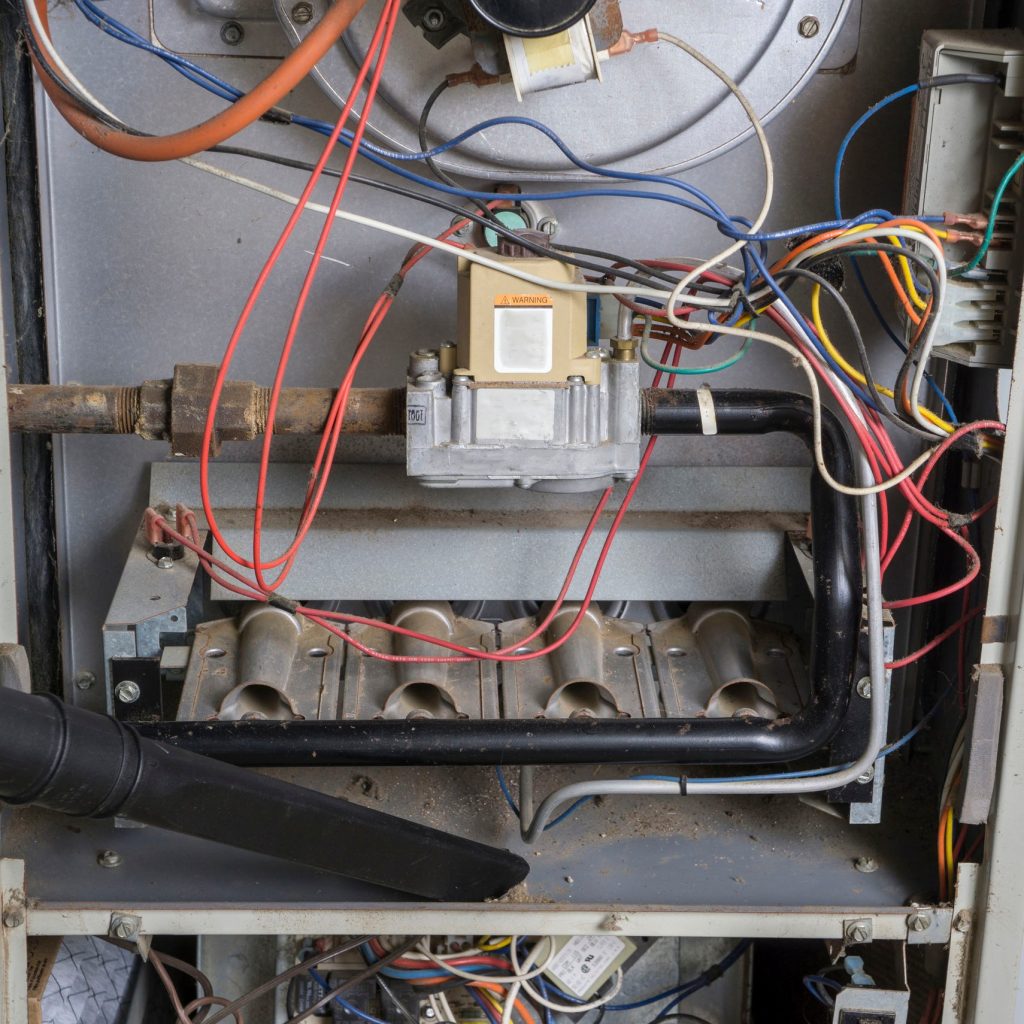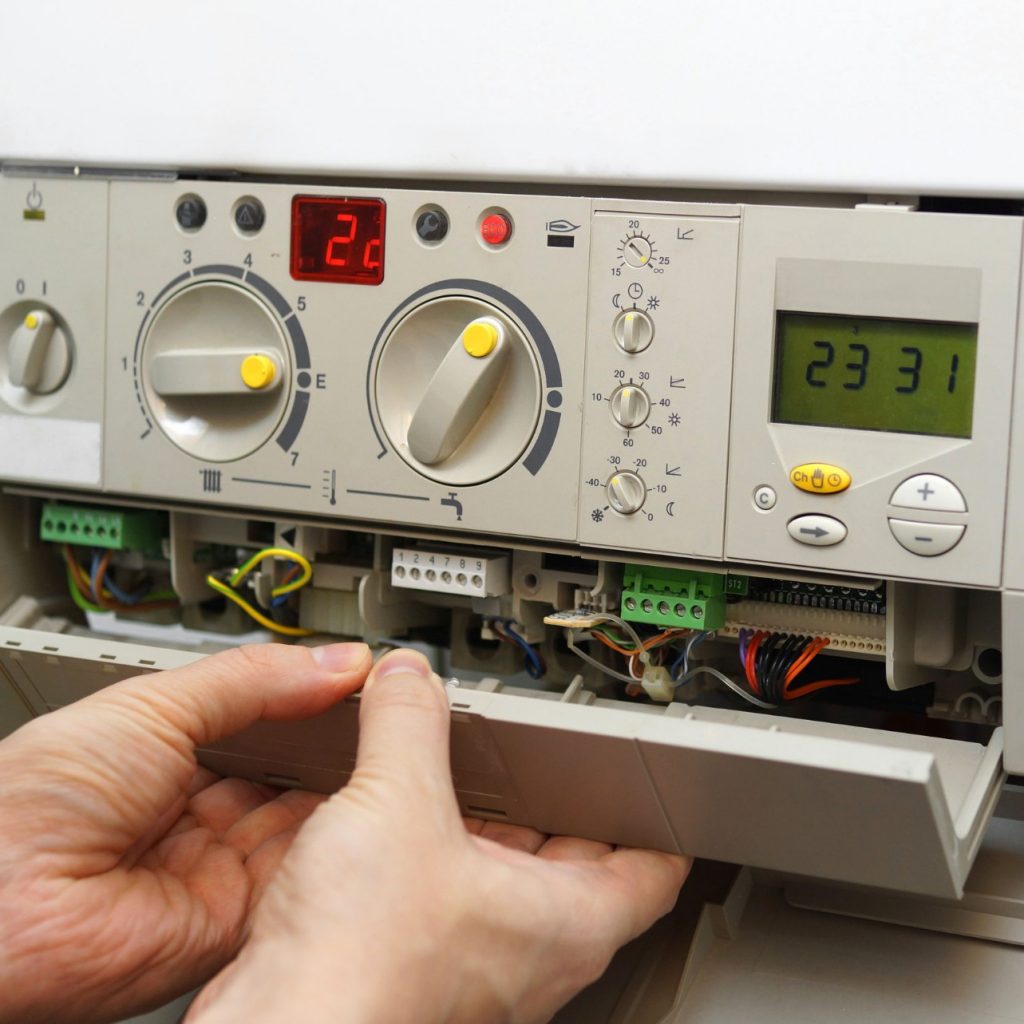
What Can Cause a Furnace to Stop Working?
Were you searching the internet for “best furnace repair near me” and came across our website and this article? While this may not be the answer you wanted for “furnace repair near my location”, we believe we have some answers to commonly asked questions that may help you. Please keep reading and even if it doesn’t help you right now with your furnace repair needs, maybe it will at a later date. We will start with the biggest question:
Dirty filters clog a furnace fast and can cause it to shut off and stop working. Many furnace repairs calls could have been avoided if the air filter was replaced or cleaned regularly. Why? The furnace needs air to flow through the filter freely so it can blow over the heat exchanger and into the vents to each room in your home.
When the filter is filled with debris, dirt, and dust, the air can’t flow through it. They design furnaces today to shut off when things like airflow aren’t right so that the furnace doesn’t overheat and catch on fire.
How do you fix a furnace?
We will provide some simple steps that any homeowner can do or should learn to do if they don’t know how yet. These steps could keep you from making a phone call to a furnace repair technician and save you some money and keep your home warm without interruption.
- The Thermostat: Make sure the thermostat setting is on “heat”, and if there isn’t any heat coming out of the vents, replace the battery. Then check the setting on the thermostat and compare it to the room temperature. Move the thermostat up 5 degrees and see if the furnace turns on. If you have a programmable thermostat, make sure it is on the right day and time. If there is still no heat, trace the wires from the thermostat to the furnace for any breaks. If you find one, splice it together and tape it up. Using a hairdryer on cool, blow out the thermostat to remove debris and dust, then replace it, making sure you attach it firmly and level.
- Breakers & Shut Off Switches: This may sound impossible, but many furnace repair calls have the result the technician finds is the furnace wasn’t turned on to start with. Your furnace may have a wall switch close to or on the furnace. Check the circuit breaker for the furnace and make sure the blower motor’s front panel is securely closed and fastened.
- The Filter: As we mentioned earlier, a clogged filter can cause a furnace shutting off. Either replace it or clean it, depending on which type of filter you have. This is one of the simplest problems that most furnace repair calls end up being.
- Blocked or Leaking ducts: Check all the ducts for blockage and clear the blockage out. Check for leaks and mend those leaks with cloth duct tape.
- Gas and Pilot Light: If your furnace is gas-operated, make sure you turn the gas valve to the on position, and the furnace is getting gas. If all seems in place, then check the pilot light and if it has gone out, re-light it. This can save you money on an unnecessary gas furnace repair call.
- The Exhaust Flue: Birds and other critters will nest in the chimney exhaust flue because of the warmth. If you find a next in there, with the furnace off and thermostat down as far as it goes, take the duct apart and remove any blockage. Then reassemble it, learning how to repair furnace vent pipe with vent tape available at any big box home improvement store or hardware store.
- Check and Flush Drains: One day of heat can add gallons of water to a high-efficiency furnace. When the drain lines become clogged with mold and sediment, it can cause the furnace to shut off – again, a safety feature. Remove the drain hose and clean it with bleach and water mixture in a 25:75 ratio and flush it out with clear water afterward.
- Heat Pump, Exhaust, Intake Vents: If you find something blocking the exhaust or intake, clean it off. If there is ice on the pipes causing the clog, call a furnace repair technician. This is more than an inexperienced homeowner can repair. If your home has a heat pump, make sure there isn’t any grass and/or leaves covering the outdoor unit.
How do I know if my furnace motor is bad?
They build furnaces hardy and sound, meant to withstand the dealings of winter. They typically require little maintenance or repair, but inevitably, they all will fail at some point. Many furnace repair calls find that the furnace motor has overheated, which may or may not mean it has gone out. Some of those clear signs it is overheating are:
- A burning or hot smell coming out of the vents. This is sometimes accompanied by the furnace has shut off and if it hasn’t it will.
- Loud unusual noises like humming coming from the furnace. The motor may be overheated, but it may still have enough power to start but it can’t turn. It generates excessive heat from the frozen motor, and it hums.
- The furnace has cycled off and won’t restart without pushing the reset button. This is a sign that it is shutting off as safety, and usually, the motor has overheated.
How much does it cost to replace a furnace motor?
Nationwide, replacing the blower motor in a furnace can cost $400 to $600, this is labor and parts. The cost of a single-speed blower motor is around $450 along, while a variable speed blower motor can cost upward of $600 or more.

What is the average cost of a furnace repair?
If the blower motor isn’t part of the furnace repair, the average cost is between $130 to $400 with $250 being the median cost. Some furnace repair costs can be as much as $1,000 depending on the problem.
The furnace is an important part of your home, especially in the winter months. Taking the time for general maintenance year-round, especially changing of the filter, is important and will minimize the need to make furnace repair calls for the smallest issues. When it comes to finding “an RV furnace repair near me”, you can do the same with an Internet search, but the furnace repair technicians for your home furnace will not be the same ones for your RV. Call (410) 921-1277 today for your furnace repair in Severn and Baltimore, MD with Rocky HVAC.


